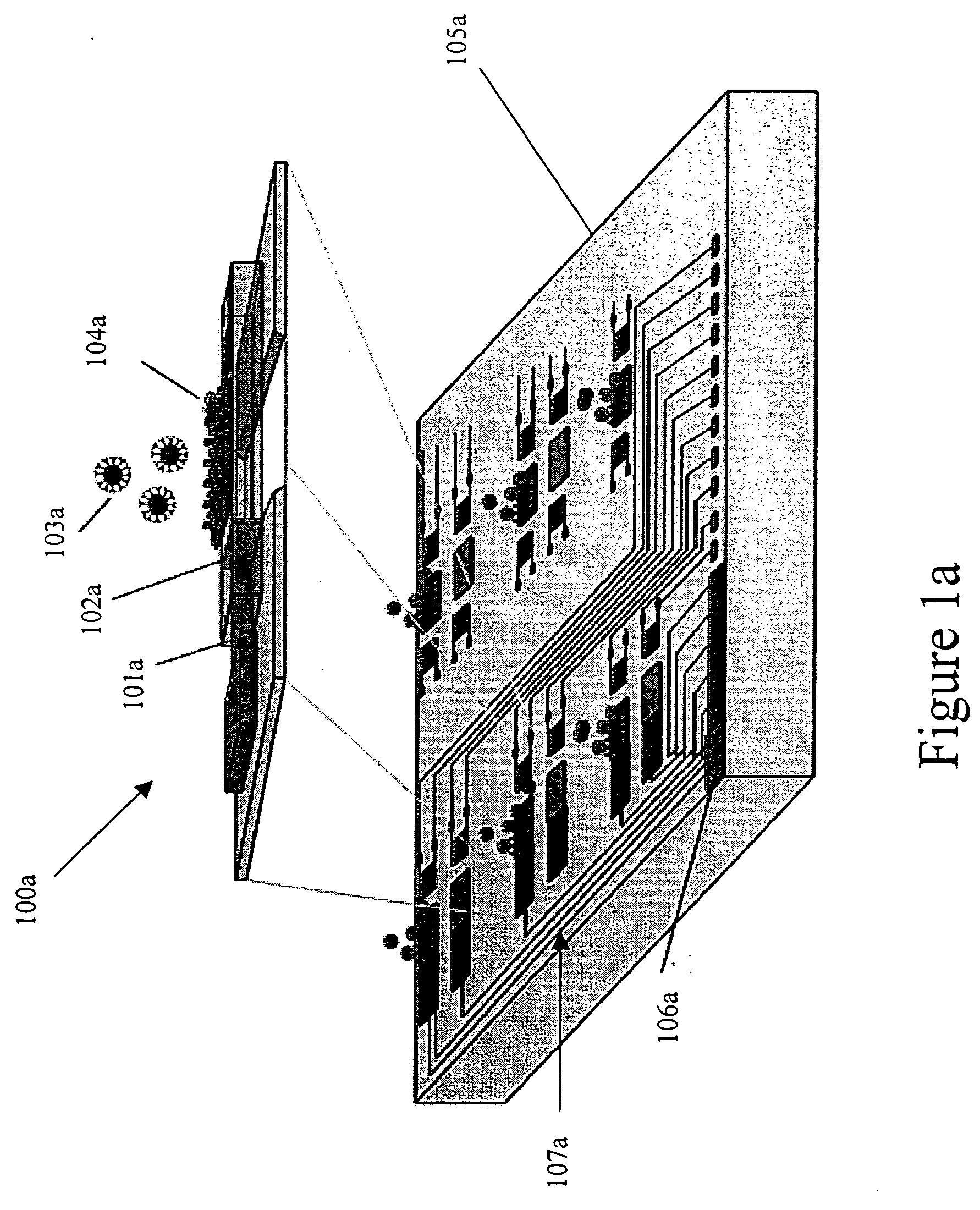Acoustic wave sensor apparatus, method and system using wide bandgap materials
a wide bandgap material and sensor technology, applied in the field of acoustic wave (aw) sensors, can solve the problems of significant changes in such acoustic wave characteristics, and achieve the effects of high electromechanical coupling coefficient, high stability, and fast acoustic velocity
- Summary
- Abstract
- Description
- Claims
- Application Information
AI Technical Summary
Benefits of technology
Problems solved by technology
Method used
Image
Examples
Embodiment Construction
[0053]FIG. 1a shows an array arrangement of aluminum nitride-based (AlN) photo-acoustic biosensor devices integrated on a VLSI chip 105a. The array arrangement includes an integrated laser diode arrangement 106a capable of high frequency modulation, a waveguide arrangement 107a, an array of acoustic wave arrangements 100a (one is shown in expanded detail arrangement), a carbon-implanted region 102a, and a micro-machined resonating bridge 104a. An immobilization layer containing chemical and / or biological binding sites transverses the resonating bridge 104a. Interaction by an analyte 103a containing target molecules or structures binds to the resonating bridge 104a of the acoustic arrangement 100a, so as to change the resonate frequency. The change in the resonant frequency is detected by reflection using a second laser diode and a return path (such as, for example, using a waveguide) or by electronic interdigital electrodes.
[0054] During operation, the laser diode 106a pulses light...
PUM
| Property | Measurement | Unit |
|---|---|---|
| acoustic wavelength | aaaaa | aaaaa |
| driving frequency | aaaaa | aaaaa |
| frequency | aaaaa | aaaaa |
Abstract
Description
Claims
Application Information
 Login to View More
Login to View More - R&D
- Intellectual Property
- Life Sciences
- Materials
- Tech Scout
- Unparalleled Data Quality
- Higher Quality Content
- 60% Fewer Hallucinations
Browse by: Latest US Patents, China's latest patents, Technical Efficacy Thesaurus, Application Domain, Technology Topic, Popular Technical Reports.
© 2025 PatSnap. All rights reserved.Legal|Privacy policy|Modern Slavery Act Transparency Statement|Sitemap|About US| Contact US: help@patsnap.com



